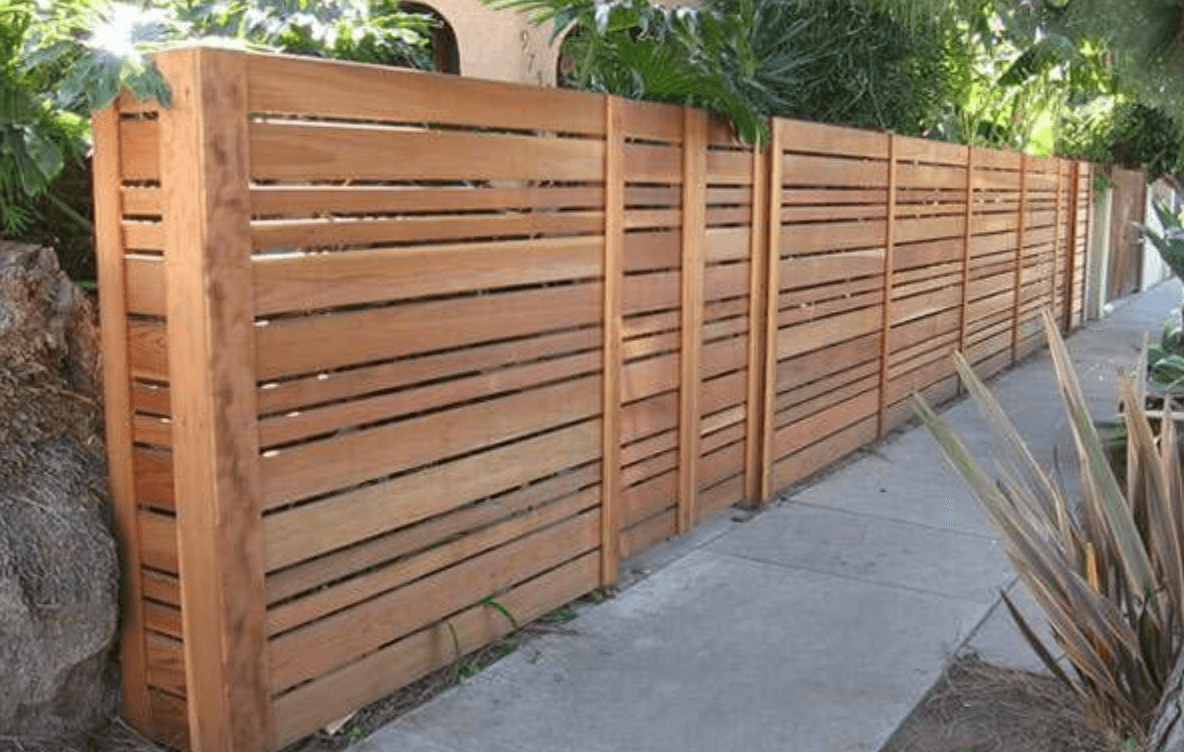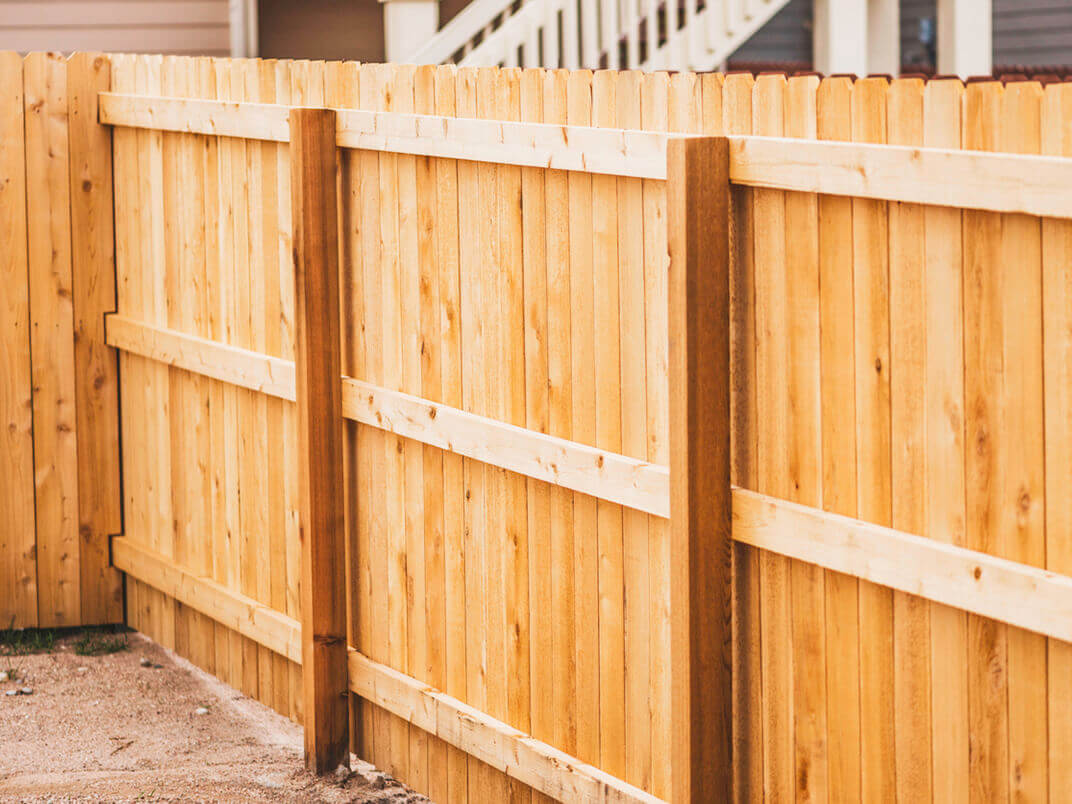All Categories
Featured
Selecting the best sort of fence for your property is a decision that calls for thoughtful factor to consider of numerous aspects, from the material and design to its function and upkeep requirements. A fence not only offers useful functions such as security and privacy yet can likewise enhance the aesthetic allure of your home. With a selection of materials offered, it's vital to comprehend what jobs best for your specific demands.
![]()
Privacy: If your objective is to block out the sight from neighbors or passersby, you'll desire a solid fence with no spaces. Products like timber, vinyl, and compound are preferred options for privacy fencings. They provide the needed coverage to make sure a remote yard or yard room. Protection: For maintaining trespassers out or safeguarding family pets and youngsters, you'll need a strong, high fence. Steel fences such as steel, light weight aluminum, or chain link offer great durability and are challenging to climb up. These products are likewise perfect for creating a protected perimeter around your residential property. Visual Charm: If the purpose of your fencing is a lot more attractive than practical, you may opt for a picket fencing, functioned iron, or a split rail fence. These options supply an eye-catching limit without using full privacy. 2. Consider Your Budget plan. Your spending plan will certainly play a critical duty in your decision. Various products come with differing price factors, so it is necessary to think about exactly how much you want to spend. Below are some general guidelines:
Timber Secure Fencing: One of one of the most economical choices, timber fencings can be personalized and installed quickly, though they require upkeep to avoid rot and bending. Routine staining or paint is essential to keep its appearance and longevity. Vinyl Secure fencing: While vinyl is a lot more expensive ahead of time than wood, it's a low-maintenance alternative. Vinyl fences do not call for paint, staining, or securing, and they are immune to degeneration, fading, and bugs. However, they can be vulnerable to cracking in severe chilly temperatures. Chain Web Link Secure Fencing: If your main top priority is maintaining expenses low, chain web link fences are the most budget-friendly option. While they do not offer much in regards to privacy, they're practical for noting and protecting pet dogs building borders. Metal Fencing (Aluminum or Steel): Steel fencings are durable, durable, and practically maintenance-free. While they can be more expensive than timber or chain link, they use included security and a streamlined, modern-day appearance. 3. Toughness and Upkeep Demands. Consider the long-lasting toughness of your fencing and just how much time and effort you want to spend in maintenance:
![]()
Timber: While wood supplies an all-natural look, it needs normal upkeep, consisting of securing and discoloring, to secure it from the aspects. Wood fencings can last 10-15 years with proper upkeep. Plastic: Plastic fences are low-maintenance and are extremely resilient. They won't rot, warp, or fade over time. Once set up, you can anticipate a vinyl fence to last for several decades with minimal treatment. Metal: Aluminum and steel fencings are extremely resilient and call for little to no maintenance. Aluminum won't corrosion, and steel can be treated with a safety finish to avoid rust. Both choices can stand up to severe weather and are best for long-lasting usage. Chain Link: Although wire mesh fence are tough and durable, they might require periodic repair services, especially if the galvanized layer begins to subside. They can rust with time, though modern-day layers like vinyl are offered to extend the life expectancy. 4. Factor in Aesthetic Appeal. The design and style of the fence must enhance the design of your residential or commercial property. Consider the general aesthetic you want to achieve:
Standard Houses: For even more traditional, typical residential or commercial properties, a wood or wrought iron fencing may be the most effective fit. These materials supply an ageless appeal and can be customized to match the style of your home. Modern or Contemporary Homes: If you have a contemporary home, you might want to pick smooth, minimalistic products like light weight aluminum or vinyl. These fencings provide a clean appearance and can be customized with various colors or coatings. Ranch or Country Settings: For bigger buildings or country settings, split-rail or ranch-style fences can give an authentic look and appropriate for specifying residential or commercial property limits while still allowing for an open sight. 5. Environment Considerations. The climate in your area plays an important role in establishing the best product for your fencing. Wood might warp or rot unless dealt with properly if you live in a location with high moisture or heavy rains. Vinyl and metal choices, nevertheless, perform well in the majority of environments and are less susceptible to damages brought on by dampness.
![]()
Final thought. Picking the ideal fencing for your property relies on comprehending your requirements, spending plan, and personal choices. Whether you're prioritizing privacy, protection, aesthetic appeals, or reduced maintenance, there is a variety of alternatives offered. By considering the material, longevity, and design of your fencing, you can make sure that it improves the function and look of your home for years ahead.

- Evaluate the Objective of the Fencing. The initial step in choosing the excellent fencing is understanding its main function. The sort of fence you select will depend on what you intend to achieve:
Privacy: If your objective is to block out the sight from neighbors or passersby, you'll desire a solid fence with no spaces. Products like timber, vinyl, and compound are preferred options for privacy fencings. They provide the needed coverage to make sure a remote yard or yard room. Protection: For maintaining trespassers out or safeguarding family pets and youngsters, you'll need a strong, high fence. Steel fences such as steel, light weight aluminum, or chain link offer great durability and are challenging to climb up. These products are likewise perfect for creating a protected perimeter around your residential property. Visual Charm: If the purpose of your fencing is a lot more attractive than practical, you may opt for a picket fencing, functioned iron, or a split rail fence. These options supply an eye-catching limit without using full privacy. 2. Consider Your Budget plan. Your spending plan will certainly play a critical duty in your decision. Various products come with differing price factors, so it is necessary to think about exactly how much you want to spend. Below are some general guidelines:
Timber Secure Fencing: One of one of the most economical choices, timber fencings can be personalized and installed quickly, though they require upkeep to avoid rot and bending. Routine staining or paint is essential to keep its appearance and longevity. Vinyl Secure fencing: While vinyl is a lot more expensive ahead of time than wood, it's a low-maintenance alternative. Vinyl fences do not call for paint, staining, or securing, and they are immune to degeneration, fading, and bugs. However, they can be vulnerable to cracking in severe chilly temperatures. Chain Web Link Secure Fencing: If your main top priority is maintaining expenses low, chain web link fences are the most budget-friendly option. While they do not offer much in regards to privacy, they're practical for noting and protecting pet dogs building borders. Metal Fencing (Aluminum or Steel): Steel fencings are durable, durable, and practically maintenance-free. While they can be more expensive than timber or chain link, they use included security and a streamlined, modern-day appearance. 3. Toughness and Upkeep Demands. Consider the long-lasting toughness of your fencing and just how much time and effort you want to spend in maintenance:

Timber: While wood supplies an all-natural look, it needs normal upkeep, consisting of securing and discoloring, to secure it from the aspects. Wood fencings can last 10-15 years with proper upkeep. Plastic: Plastic fences are low-maintenance and are extremely resilient. They won't rot, warp, or fade over time. Once set up, you can anticipate a vinyl fence to last for several decades with minimal treatment. Metal: Aluminum and steel fencings are extremely resilient and call for little to no maintenance. Aluminum won't corrosion, and steel can be treated with a safety finish to avoid rust. Both choices can stand up to severe weather and are best for long-lasting usage. Chain Link: Although wire mesh fence are tough and durable, they might require periodic repair services, especially if the galvanized layer begins to subside. They can rust with time, though modern-day layers like vinyl are offered to extend the life expectancy. 4. Factor in Aesthetic Appeal. The design and style of the fence must enhance the design of your residential or commercial property. Consider the general aesthetic you want to achieve:
Standard Houses: For even more traditional, typical residential or commercial properties, a wood or wrought iron fencing may be the most effective fit. These materials supply an ageless appeal and can be customized to match the style of your home. Modern or Contemporary Homes: If you have a contemporary home, you might want to pick smooth, minimalistic products like light weight aluminum or vinyl. These fencings provide a clean appearance and can be customized with various colors or coatings. Ranch or Country Settings: For bigger buildings or country settings, split-rail or ranch-style fences can give an authentic look and appropriate for specifying residential or commercial property limits while still allowing for an open sight. 5. Environment Considerations. The climate in your area plays an important role in establishing the best product for your fencing. Wood might warp or rot unless dealt with properly if you live in a location with high moisture or heavy rains. Vinyl and metal choices, nevertheless, perform well in the majority of environments and are less susceptible to damages brought on by dampness.

- Local Rules and HOA Guidelines. Before settling your fence choice, make sure to contact your regional town or property owners association (HOA) for any constraints concerning fence elevation, products, or layout. Lots of areas have details guidelines in location, and it is essential to conform to avoid potential penalties or having to take down the fence.
Final thought. Picking the ideal fencing for your property relies on comprehending your requirements, spending plan, and personal choices. Whether you're prioritizing privacy, protection, aesthetic appeals, or reduced maintenance, there is a variety of alternatives offered. By considering the material, longevity, and design of your fencing, you can make sure that it improves the function and look of your home for years ahead.
Latest Posts
Sophisticated, Resilient Tile Flooring for Every Space
Published Apr 22, 25
1 min read
Benefits of NAPA AutoCare? Montclare Auto Repair Explains Why
Published Apr 22, 25
2 min read
Industrial Roofing Solutions by Weathercraft Companies
Published Apr 22, 25
1 min read